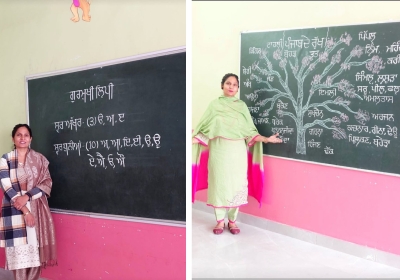
Gurukul sSystem finds new life in modern education spaces
Bridging the ancient and the modern: reviving the Gurukul System in today’s learning spaces
In a world where the pace of change is relentless and information is in constant flux, education systems must evolve to keep up. More than ever, there is a pressing need to cultivate learners who can think critically, solve complex problems, innovate creatively, and adapt seamlessly to a rapidly changing environment. Today’s classrooms must go beyond the delivery of information—they must inspire curiosity, enable exploration, and prioritize the holistic development of each student.
A Look Back to Move Forward
The Gurukul system, a cornerstone of the Indian Knowledge System, emphasized personalized, experiential, and holistic education. Rooted in a deep connection with nature, the model encouraged students not only to excel intellectually but also to grow spiritually, morally, and physically. Learning took place through oral recitation, storytelling, and hands-on activities, often under the direct mentorship of a guru in small groups or one-on-one settings. This system stood in stark contrast to the Western educational model introduced to India in the19th century. After Lord Macaulay’s 1835 recommendations and the subsequent Indian Education Act, British-style schooling disrupted indigenous methods. Inspired by Horace Mann’s "one-room schoolhouse" model in the West, these schools were industrial in design—rows of desks, rigid schedules, and passive absorption of information. The transition from Gurukul to the Western model marked a seismic shift in how learning environments were conceived. Unfortunately, the physical structure of these classrooms prioritized control over creativity, leading to factory-like setups that lacked the flexibility and personalization essential for holistic development.
The Rise of Active Learning Spaces
Today’s educators increasingly recognize the limitations of traditional classrooms. Large class sizes diminish teacher-student interaction, while static layouts hinder group collaboration and experiential learning. Furthermore, over-reliance on digital resources—mirrored in countries like Sweden, where students now face literacy issues—points to the need for a more grounded and human-centered approach.Enter the concept of active learning spaces. These environments are designed to be flexible, dynamic, and student-centered. Classrooms no longer have a "front"; instead, teachers act as facilitators, moving fluidly around the space to guide learning. Modular furniture allows for quick reconfigurations, enabling project-based learning, peer teaching, and collaborative problem-solving. This model aligns surprisingly well with the ancient Gurukul principles. The study underscores that integrating elements of Gurukul into active learning spaces can revitalize education, making it more adaptive, engaging, and meaningful.
Relevance of Gurukul Wisdom in Modern Frameworks
The parallels between Gurukul principles and contemporary educational theories are striking. Howard Gardner’s 1983 theory of multiple intelligences emphasized learning beyond academics—a concept long practiced in Gurukul. Similarly, Dr. Benjamin Bloom’s taxonomy,introduced in 1956, divided learning into cognitive (knowledge), affective (attitude), and psychomotor (skills) domains. Gurukul education touched all these areas centuries earlier through its focus on hands-on activities, communal responsibilities, and physical engagement with nature. In today’s context, incorporating these principles means fostering environments where students are active participants, learning through doing, collaborating in small groups, and developing a sense of responsibility and community—just as they did in ancient Gurukuls.
ALSO READ: NEET UG 2025 counselling dates to be announced soon: all you need to know
ALSO READ: Securing India’s examination ecosystem: a digital blueprint for the future
Conclusion: Reclaiming the Soul of Education
Education must evolve—not only to keep up with a fast-changing world but to cultivate the kind of individuals who can thrive within it. Bridging the time-tested principles of the Gurukul system with modern active learning strategies offers a promising path forward. This momentum continues to grow. The National Education Policy (NEP) 2020 has laid the groundwork by advocating for holistic, values-based, and flexible learning. Flexible classrooms, nature-integrated designs, and personalized instruction create environments that do far more than deliver knowledge. They empower students to question, collaborate, and grow holistically. As the study concludes, small class sizes and teacher-student relationships are vital for inquiry-based learning and the development of cognitive and emotional intelligence. Reimagining classrooms as living, breathing learning environments—spaces that nourish the mind, body, and spirit—could well be the key to the future of education. And in that future, perhaps the ancient Gurukul will no longer be a relic of the past, but a blueprint for tomorrow.Ar. Sakshi Pathak
Architect, Assistant Professor (Chandigarh University)
8427000418





